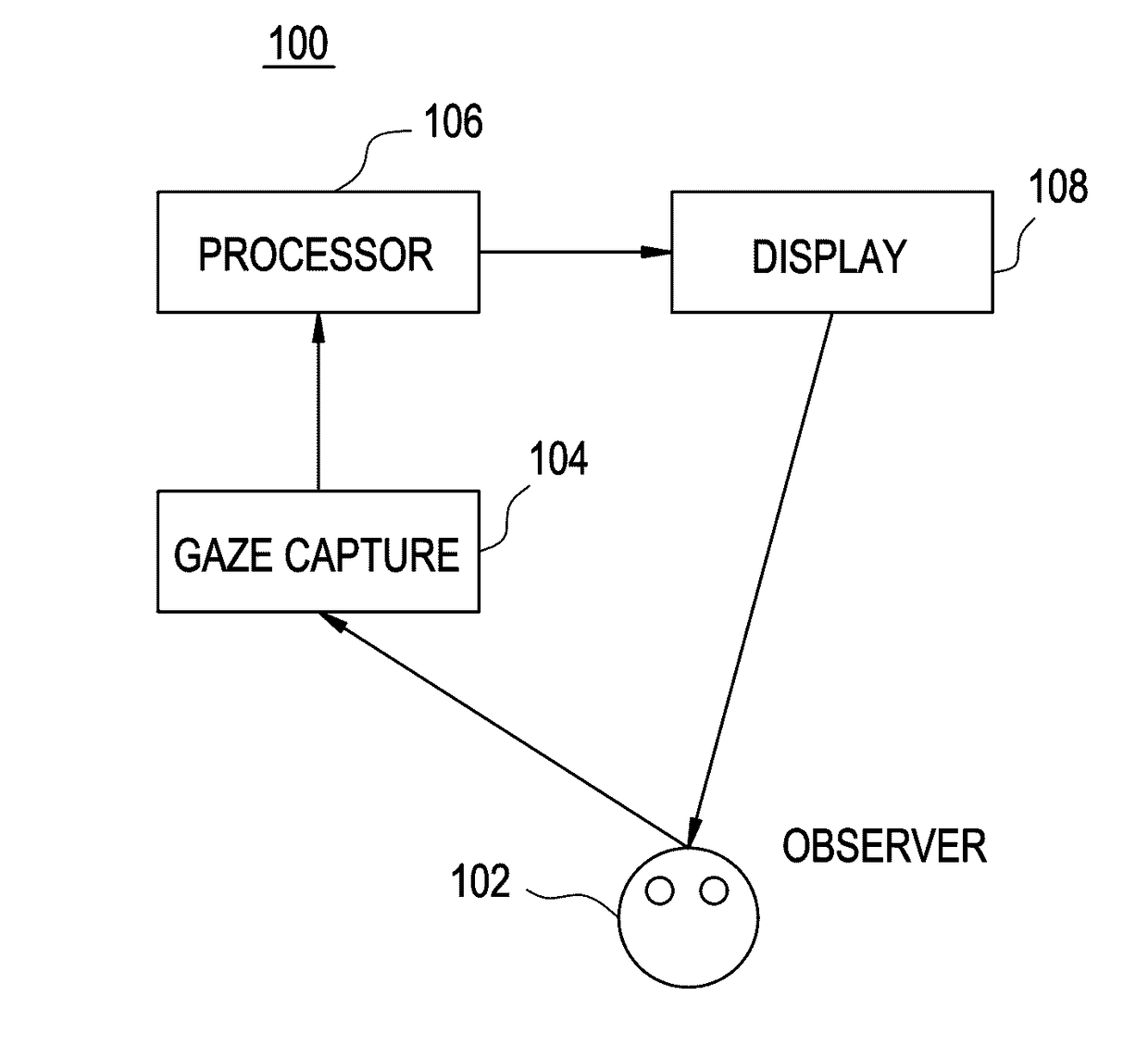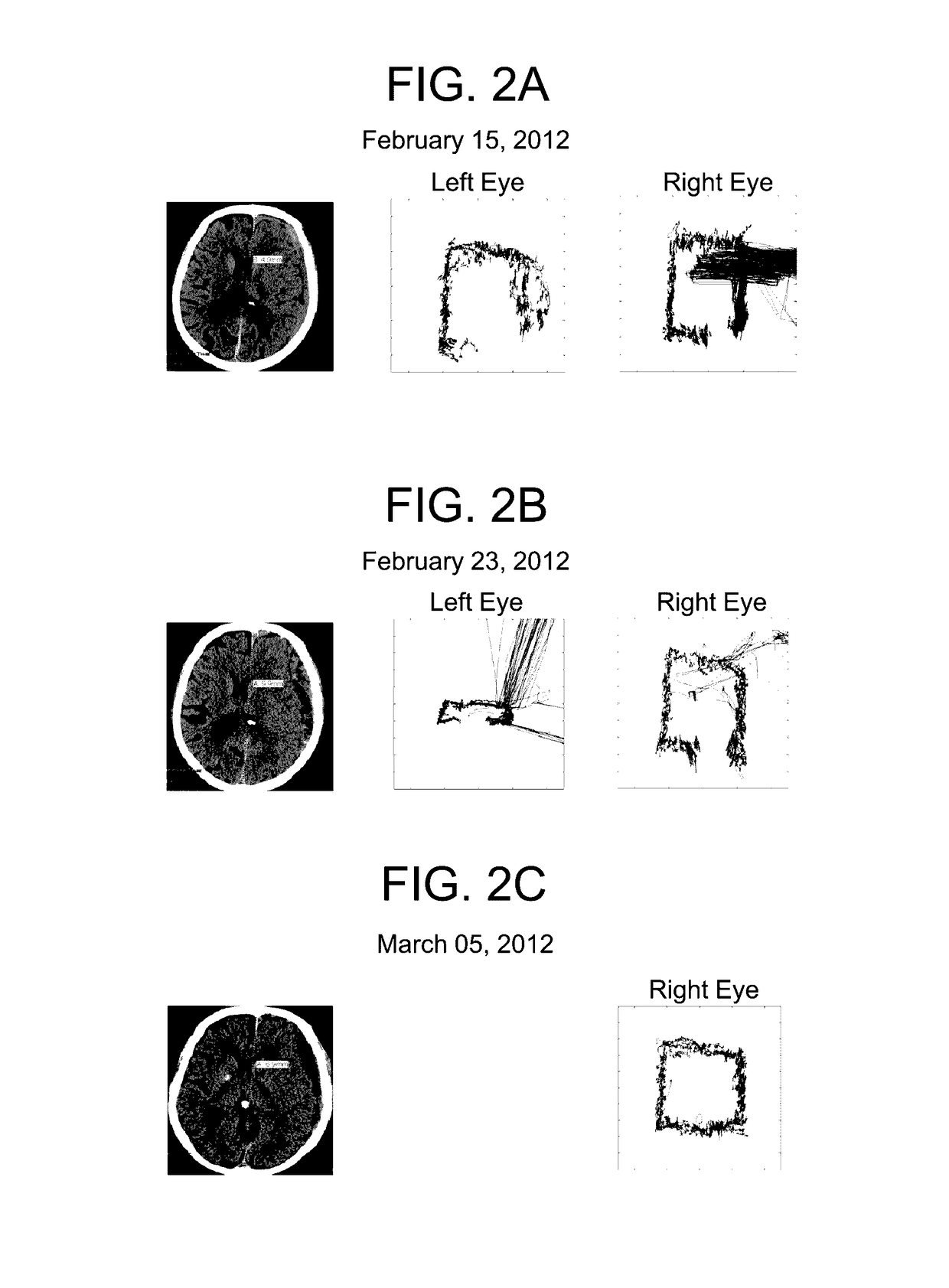Methods and kits for assessing central nervous system integrity
a central nervous system and integrity technology, applied in application, eye diagnostics, diagnostic recording/measuring, etc., can solve the problems of permanent neurologic impairment or death, chemical dilatation of the pupil, etc., to reduce variability, increase variability, and reduce the height to width ratio
- Summary
- Abstract
- Description
- Claims
- Application Information
AI Technical Summary
Benefits of technology
Problems solved by technology
Method used
Image
Examples
example 1
Background
[0151]Eye movements contain clinically important information about neurological integrity. Clinical devices may take advantage of the relative ease of automated eye-movement tracking, for applications such as assessing recovery following clinical intervention. We designed a technique that can reliably measure eye movements with precision, without initial spatial calibration. We tracked eye movements without spatial calibration in neurologically intact adults and in neurosurgical patients as they watched a short music video move around the perimeter of a screen for 220 s. We measured temporal features of the data, rather than traditional spatial measures such as accuracy or speed.
[0152]We reliably discriminated between the presence and absence of neurological impairment using these uncalibrated measurements. Our results indicate that this technique may be extended to assess neurologic integrity and quantify deficits, simply by having patients watch TV.
[0153]These methods ar...
example 2
Early Detection of Transtentorial Herniation as Manifested by Cranial Nerve III Palsy and Detection of Concussion
Discussion
[0218]Eye movement tracking for neuropsychiatric and brain injury research (Maruta, et al. Journal of Head Trauma Rehabilitation (2010) 25: 293-305; Heitger, et al. Brain (2009) 132: 2850-2870) has traditionally been based on spatial calibration. With calibration, the eye-tracker measures the relative position of pupil and corneal reflection for a period of about 400-800 ms while the subject looks at a target or targets of known position to generate meaningful spatial coordinates during subsequent pupil movement. Calibration requires subject cooperation and precludes detection of anatomically dysfunctional ocular motility. We developed a novel technique for eye movement tracking without spatial calibration which can, theoretically, assess the function of the oculomotor nerve (cranial nerve III). Among its other functions, the oculomotor nerve innervates the supe...
example 3
Quantitation of Disease Severity for Normal Pressure Hydrocephalus and Diagnosis of Shunt Malfunction / Optimization of Valve Pressure for the Treatment of Normal Pressure Hydrocephalus
[0251]Dementia is a disease with numerous etiologies and devastating consequences. Spatially calibrated eye movement tracking of demented subjects reveals impaired smooth pursuit function. We developed a novel technique for eye movement tracking during watching of a moving video that does not rely on spatial calibration. Here we show that subjects with normal pressure hydrocephalus demonstrated decreased tracking variability after cerebrospinal fluid diversion relative to their preoperative state. This decrease in variability correlated with improvements in gait and was not seen in surgical patients without normal pressure hydrocephalus or serially tracked control subjects. Our results suggest that cerebrospinal fluid diversion improves the ability of normal pressure hydrocephalics to perform less varia...
PUM
 Login to View More
Login to View More Abstract
Description
Claims
Application Information
 Login to View More
Login to View More - R&D
- Intellectual Property
- Life Sciences
- Materials
- Tech Scout
- Unparalleled Data Quality
- Higher Quality Content
- 60% Fewer Hallucinations
Browse by: Latest US Patents, China's latest patents, Technical Efficacy Thesaurus, Application Domain, Technology Topic, Popular Technical Reports.
© 2025 PatSnap. All rights reserved.Legal|Privacy policy|Modern Slavery Act Transparency Statement|Sitemap|About US| Contact US: help@patsnap.com



